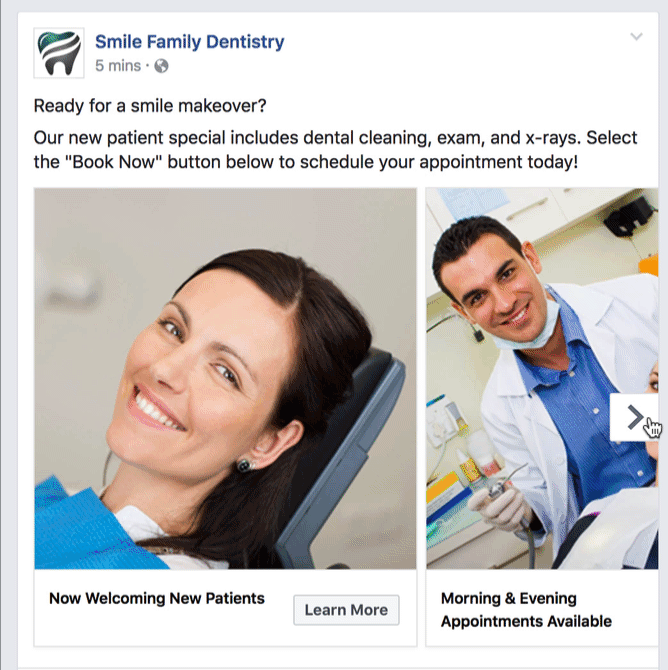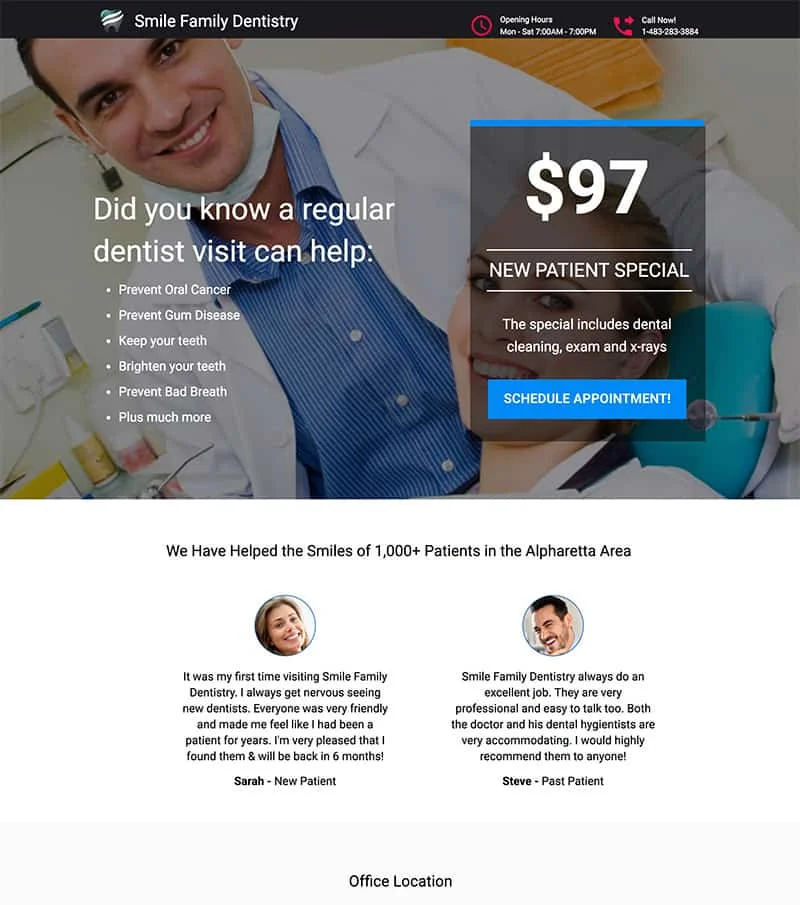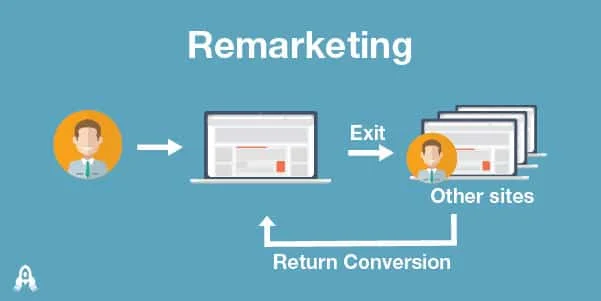Dental Practice Advertising with Social Media
According to Deloitte's 2015 Global Mobile Consumer Survey*, approximately 78% of the nearly 50,000 respondents owning smartphones said they checked social media networks within 15 minutes of waking up. And in their 2016 Survey, they found that smartphone owners still ranked shopping as the No. 1 activity while using their phone, with 93% of respondents reporting they fall into this bucket*.
So why does this matter if you're a dentist? Advertising reaches new patients that otherwise may never know you exists and the key to advertising is to go where the people are. People are telling us they're on their phones and engaging with their various social media accounts.
Creating a strategic dental practice adverting plan can be complex and for many overwhelming. Choosing the right platforms, setting the right objectives, and understanding how to choose the best custom audience will set your ads apart from your competition. Social media users are going to see ads. Now, how do you get them to see yours.
1. Define Your Dental Practice’s Business Goal
Social media advertising is a powerful way to reach new patients but without a business goal you might as well be playing darts blindfolded. Once you define your goal you’re able to work backwards to build a strategy that can actually accomplish your goal.
But knowing the goal isn't enough. You also have to what success looks like. Knowing what YOU consider 'success' will help in choosing the best social media platform, objectives, ad types, budget, who to target, and so much more.
Some of the most common business goals that social media advertising can help dental practices achieve include:
New patients
Teeth cleaning visits
Teeth whitening visits
Dental exam visits
Return patient visits
Key Takeaways:
Define your goal
Know what success means to you
2. Choose the Right Social Media Platforms
The number of social media platforms to choose from can be overwhelming and it can often feel like a new one appears on the landscape every time you open your web browser. So how do you know where to start and how do you know what's the right platform to use to reach your ideal patient. The first step is to ask your self the three most important questions about a social media platform.
Are my ideal potential patients spending time on the platform?
Does the platform allow me to advertise?
Can I reach my ideal patients in a cost effective manner on the platform?
If the answer is 'No' to any of the three questions then the platform is just not right for your business. If you don't have the time to evaluate all of the platforms out there, two social media platforms that answers yes to these questions for most businesses are Facebook and Instagram. Both platforms have a lot of strengths that help you reach the most potential new patients at the best cost to your business and working both together can provide a powerful marketing machine. (Read our earlier posts about the power of Facebook and Instagram advertising to learn more.)
3. Target the Correct Audience
There are 2.7 billion* active social media users each month. A typical dental office can reach between 200,000 to 300,000 people through social media advertising in their local area. From that group of people, you want to ensure you are advertising to your ideal patient. That’s where the targeting capabilities on social media come into play. Complex and granular, targeting allows you to deliver the best message at the right time to the correct person. There are hundreds of targeting options that your practice can utilize to connect with new patients.
Proximity to your location
Male or Female
Age
Income level
Work industry or employer
Number of children and age
New residents to the area
4. Create a Fully Integrated Approach
All of your social media advertising should be working together with any other marketing messages you are running each month. Utilizing messaging and data collected from one source for another marketing channel allows you to optimize the number of ideal potential new patients you are driving to your business. Platforms like Facebook and Instagram allow you to build custom audiences of people who have previously visited your website as well as use customer data such as a emails & phone numbers that you've collected via other marketing opportunities. Using this data, you’re able to serve ads to these custom audiences who have a higher likelihood of engaging with your business.
An Example:
Your goal is to increase the number of teeth whitening services booked by existing patients. With custom audiences built from the data you've collected (emails and/or phone numbers), you can present an advertisement for teeth whitening to all of your existing patients on social media platforms they frequent.
5. Create Eye-Catching Ads
People are busier than ever and you have a limited time to catch their attention with your marketing campagins. In a study conducted by Microsoft*, the average attention span for the notoriously ill-focused goldfish is nine seconds, but people now generally lose concentration after eight seconds. How have we strayed so far? The good news is that now, in the age of mobile, this same study found that we are better at multitasking. When planning your social media advertising you have to plan on how to catch their attention, while understanding they are likely, also, focused on something else.
Select the right ad type - On Facebook and Instagram there are over 30+ different types ads to show your ideal potential patient. The ad type you choose should support your practice’s business’s goal while ensuring you stand out among the rest of what they are seeing . Click the links, as we’ve to outline a few of the various ad types for Facebook & Instagram advertising.
Choose compelling copy & images - Tailor the copy and images to speak directly to the people you are targeting and the message your are promoting.
An Example:
Your goal is to present your ad to people who have recently moved to your town. You’ll want to start by choosing an exciting ad type, perhaps a carousel ad, and use copy that speaks to their need for a new dentist. If you're a family-focused practice choosing images that include both adults and children can quickly help tell the message of your business and catch the eye of those you are targeting.
6. Think outside the box: Unpublished (Dark) Posts
Unpublished (dark) posts are ads that don’t appear on your business' Timeline or in your fans’ news feed organically but are targeted ads that appear in the new's feed of a target audience you select. Understanding how this type of post could benefit your overall strategy can help you determine if they are right for your business.
Benefits Include:
A customized, targeted audience that you feel your business would most likely appeal to, increasing the chances of them to take action.
The ability to A/B test your targeting and ads (images, copy, CTA) to optimize for your practice’s goals based on real data.
Eliminates constant post's being presented to your existing Facebook followers that may feel irrelevant or too frequent, causing them to unlike your page.
7. Link your Ads to a Compelling Landing Page
A landing page is a page within your website where visitors are taken after they click on your advertisement. Your landing page should introduce visitors to what you offer, spark their interest and convince them to take action. When someone clicks your ad, they should be directed to a landing page that’s consistent with the ad's message. Not only will this experience provide a better customer experience, but it will decrease visitors leaving your website without taking action. The goal of any ad to website landing page is to increase your conversion.
The most successful landing pages from ads are those that specifically match the message or offer of your ad. Less successful ad campaigns typically result from ads that click to the homepage of a website. Your new patients now has to start the process of finding what just enticed them to click your ad in the first place and we see high bounce rates (how we measure website visitors who leave your site quickly) as a result. High bounce rates typically yield low conversion and your ad is ultimately unsuccessful. In the end, consistent messaging will help earn trust with your potential new patients.
8. Setup Remarketing
First, let’s define remarketing. Remarketing is an ad presented to someone who has previously interacted with your website but did not take action. Did you know 98% of visitors don't take action on their first interaction with your website or advertisement? Remarketing is a critical tool to following up with potential new patients who failed to react the first time they visit. Most people who have interacted with your business are warm leads, meaning they’ve raised their hand saying they’re interested. Website visitors who are retargeted with display ads are 70 percent more likely to convert on your website.* We just have to give them a reminder and easy opportunity to take action.
Need Help with Your Dental Practice Advertising?
We would love to talk about your business' goals and find out how we can help. We offer monthly managed end-to-end marketing solutions for social media advertising. Check out our Services page to learn more about what we offer or Contact Us to schedule your free 30-minute consultation call.







